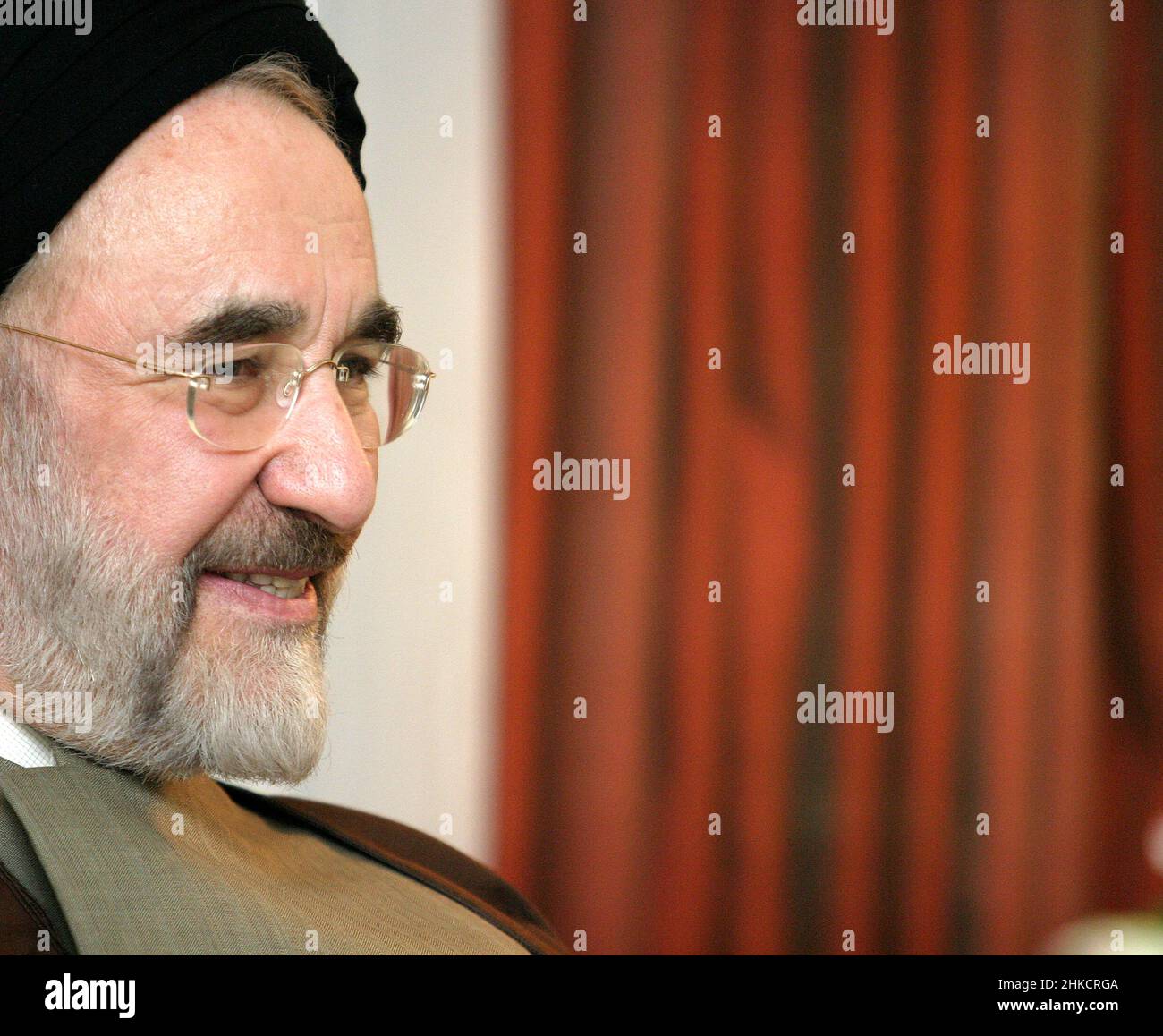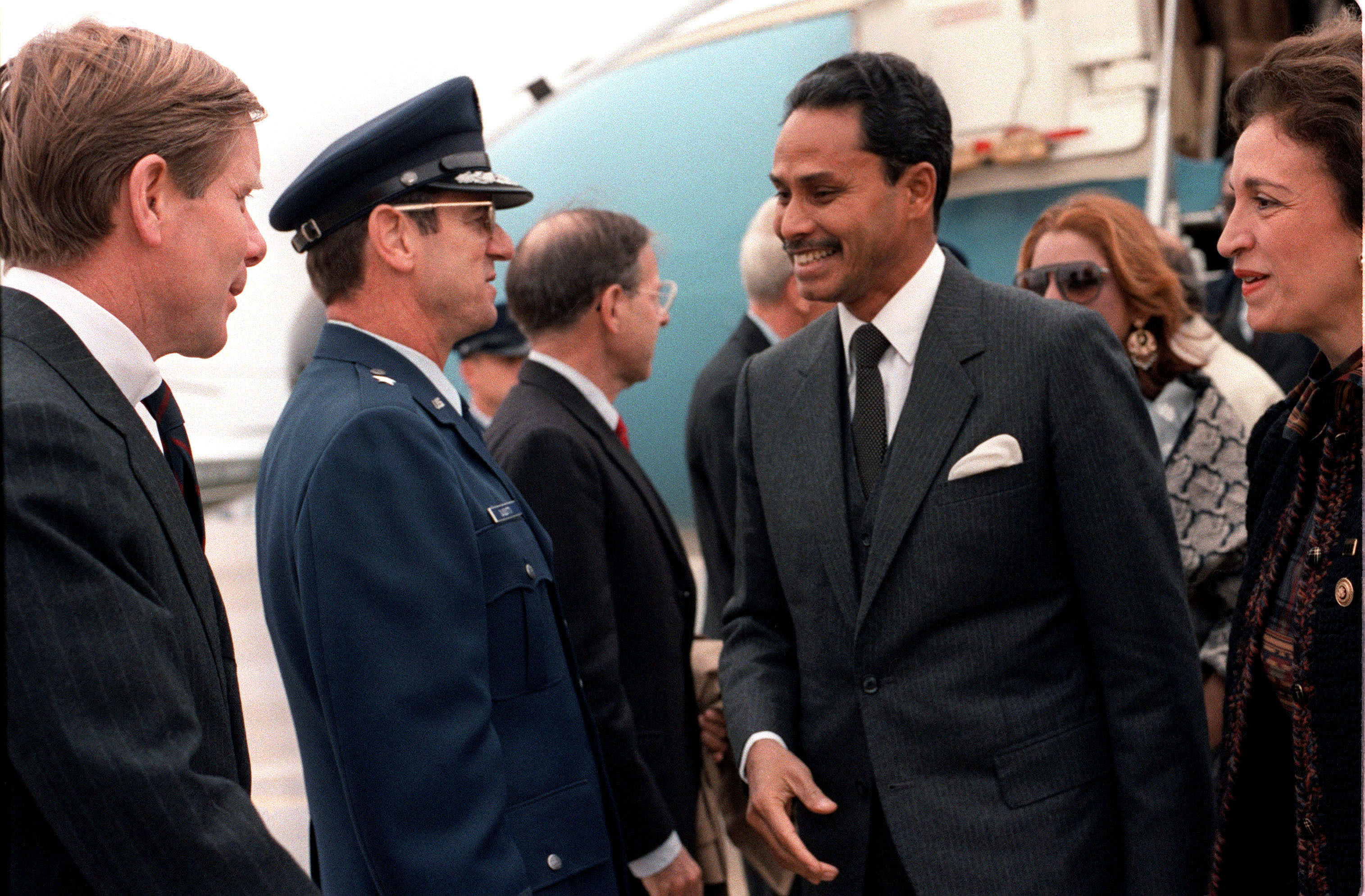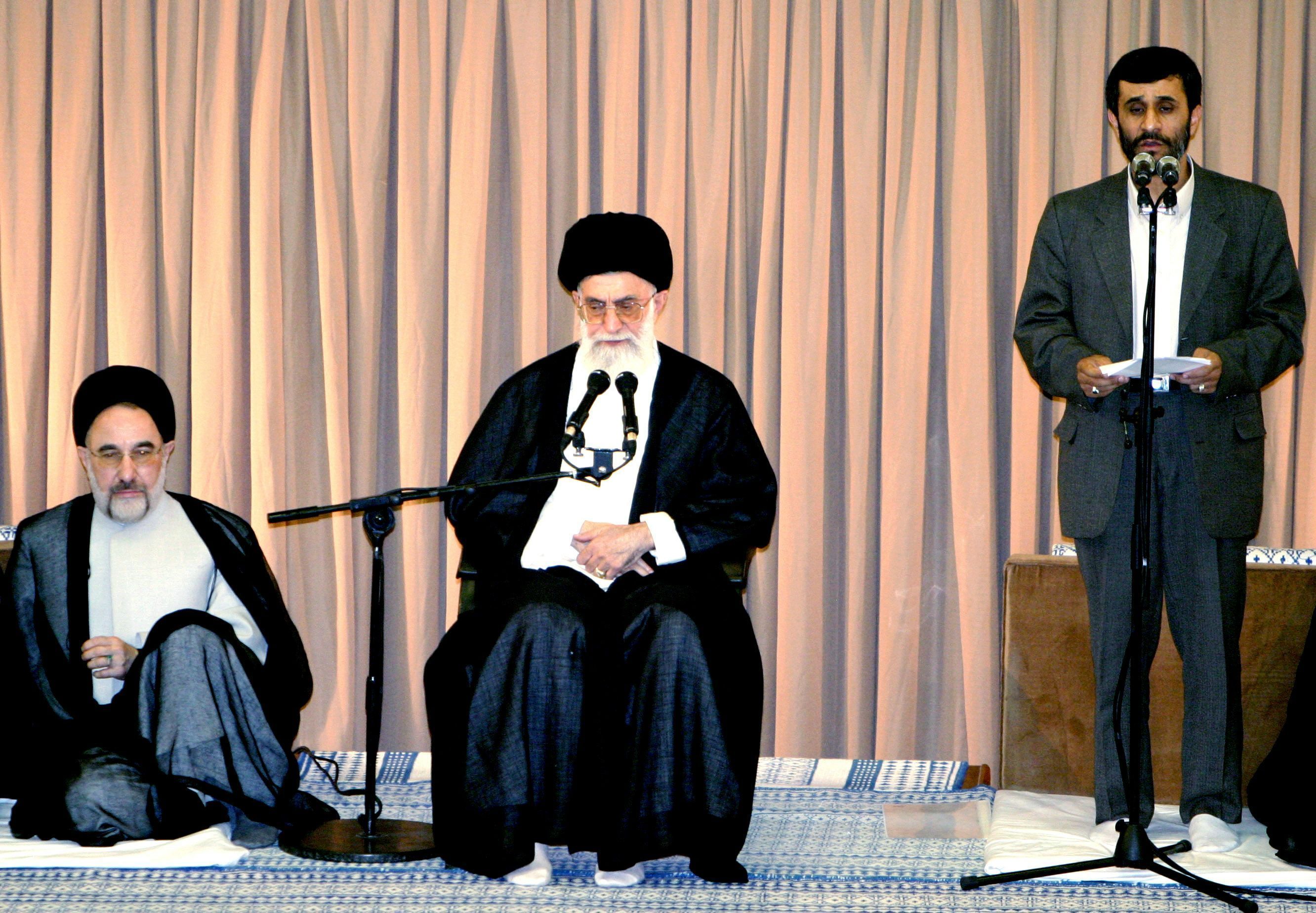
ISTANBUL, TURKEY - NOVEMBER 12: Iranian reformist politician and Shia - Source www.alamy.com
Editor's Notes: "Mohammad Khatami: Reformist President Of Iran" was published today to shed light on the life and legacy of one of Iran's most influential leaders. Understanding his impact on Iranian society and international relations is crucial for comprehending the complexities of modern Iran.
Through extensive research and analysis, we have compiled this guide to provide insights into Khatami's presidency, his reformist agenda, and its lasting significance.
Key Takeaways:
| Aspect | Key Takeaway |
|---|---|
| Presidency | Served as Iran's fifth president from 1997 to 2005. |
| Reform Agenda | Focused on political, social, and economic liberalization, promoting freedom of speech and press, and advocating for greater civil liberties. |
| Impact | Re-energized Iranian society, inspired a new generation of activists, and initiated a period of relative openness and dialogue. |
Transition to Main Article Topics:
FAQs about Mohammad Khatami
Mohammad Khatami, a pivotal figure in Iran's political landscape, served as the country's president from 1997 to 2005. Known for his progressive views and efforts to promote democracy, human rights, and open dialogue, Khatami's presidency marked a transformative era in Iran's modern history.

Spotlight On: James Kohnstamm, Executive Vice President, Miami-Dade - Source capitalanalyticsassociates.com
Question 1: What were Khatami's key domestic policies?
During his presidency, Khatami implemented several key policies aimed at improving the lives of Iran's citizens. His policies included promoting press freedom, expanding educational opportunities for women, and advocating for greater transparency and accountability in government.
Question 2: How did Khatami strive to improve Iran's international relations?
Khatami placed a high priority on improving Iran's relations with the international community. He sought to enhance dialogue and cooperation with neighboring countries and to normalize diplomatic relations with the West, particularly with the United States.
Question 3: What were the challenges Khatami faced during his presidency?
Khatami's presidency was marked by both successes and challenges. While he made significant progress on some of his goals, he also encountered resistance from conservative elements within the Iranian government who opposed his reformist agenda.
Question 4: How did Khatami's policies impact Iranian society?
Khatami's policies had a profound impact on Iranian society. His emphasis on political and social reforms created a more open and vibrant atmosphere, empowering citizens and leading to increased public participation in various sectors.
Question 5: What is Khatami's legacy today?
Khatami's presidency is widely regarded as a significant chapter in Iran's modern history. His reformist agenda, commitment to dialogue, and efforts to promote a more tolerant and democratic society continue to influence political discourse in Iran today.
Summary: Mohammad Khatami's presidency was characterized by his efforts to promote democracy, human rights, and open dialogue both domestically and internationally. Despite facing challenges, his policies had a transformative impact on Iranian society, shaping the country's political landscape and leaving a lasting legacy.
Tips by Mohammad Khatami: Reformist President Of Iran

Iran: Ex Reformist President Khatami Breaks Silence In Support Of - Source www.albawaba.com
Mohammad Khatami is a renowned Iranian reformist politician who served as the fifth president of Iran from 1997 until 2005. His presidency was marked by his efforts to promote political and social reforms within the country. If you are interested in learning more about his views and policies, here are a few tips to consider:
Tip 1: Read his speeches and writings. Khatami has given numerous speeches and written extensively on his vision for Iran. These writings provide valuable insights into his political philosophy and his plans for the country.
Tip 2: Study his domestic policies. Khatami's domestic policies focused on promoting political reform, economic liberalization, and social justice. He implemented a number of initiatives aimed at improving the lives of ordinary Iranians, including reforms to the justice system, the education system, and the health system.
Tip 3: Analyze his foreign policy. Khatami's foreign policy was guided by his belief in dialogue and cooperation. He sought to improve relations with the West, particularly with the United States. He also worked to promote regional stability and cooperation through engagement with Iran's neighbors.
Tip 4: Examine his legacy. Khatami's presidency has been the subject of much debate and analysis. Some argue that his reforms were too modest and that he failed to achieve his goals. Others maintain that his presidency was a turning point in Iranian history, and that his reforms laid the groundwork for future progress.
Tip 5: Connect his ideas to contemporary issues. Khatami's ideas on democracy, human rights, and civil society remain relevant today. By connecting his ideas to contemporary issues, you can gain a deeper understanding of the challenges and opportunities facing Iran and other countries in the region.
Mohammad Khatami: Reformist President Of Iran
Mohammad Khatami's presidency marked a period of significant change in Iran's political landscape. His reformist agenda focused on expanding political participation, promoting economic liberalization, and improving relations with the international community.
- Elected President: 1997, 2001
- Background: Cleric, intellectual, reformer
- Key Policies: Political reform, economic liberalization, international engagement
- Challenges: Conservative opposition, international sanctions
- Legacy: Expanded political freedoms, improved relations with the West
- Impact: Ushered in a period of relative openness and reform
Khatami's presidency faced challenges from conservative elements within Iran, as well as international sanctions due to Iran's nuclear program. Despite these obstacles, his policies had a lasting impact on Iran's political and social development, paving the way for a more open and reform-minded society.

Military dictator, reformist, ‘shameless’: Bangladesh ex-president - Source theprint.in
Mohammad Khatami: Reformist President Of Iran
Mohammad Khatami, the fifth President of Iran, was a pivotal figure in Iranian politics. Elected in 1997, he initiated a reformist agenda that aimed to foster political liberalization, social justice, and economic development. This reformist movement sought to address the challenges faced by Iran's rapidly growing population, including youth unemployment, political repression, and economic stagnation.

Iran's Supreme Leader Ayatollah Ali Khamenei (C) and former president - Source kayhanlife.com
Khatami's election was a watershed moment in Iranian history. It marked a shift away from the conservative hardline policies that had characterized the previous government. During his tenure, Khatami implemented a number of important reforms. He relaxed censorship laws, expanded political freedoms, and introduced economic liberalization policies. These reforms were met with both praise and criticism. Supporters hailed them as a step towards a more open and democratic society. Critics, however, argued that Khatami's reforms did not go far enough and that he failed to address the fundamental problems facing Iran.
Khatami's presidency was a complex and challenging period in Iranian history. He faced significant opposition from conservative elements within the Iranian government and society. Despite these challenges, he managed to achieve some significant reforms. His legacy as a reformer and a bridge-builder between different factions in Iranian society remains a subject of debate.
Table: Key Reforms Implemented by Mohammad Khatami
| Reform | Description |
|---|---|
| Relaxation of censorship laws | Allowed for greater freedom of expression and access to information. |
| Expansion of political freedoms | Increased the participation of civil society and allowed for a more open political debate. |
| Introduction of economic liberalization policies | Promoted private sector growth and reduced government intervention in the economy. |
Conclusion
Mohammad Khatami's presidency was a pivotal moment in Iranian history. His reformist agenda aimed to address the challenges facing Iran's rapidly growing population, including youth unemployment, political repression, and economic stagnation. While his reforms were met with both praise and criticism, he managed to achieve some significant changes during his tenure.
Khatami's legacy as a reformer and a bridge-builder between different factions in Iranian society remains a subject of debate. However, there is no doubt that his presidency marked a significant shift in Iranian politics and society.
